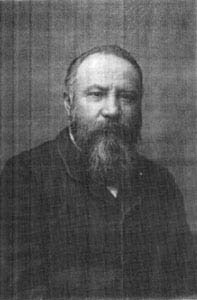Benoît Malon facts for kids
Quick facts for kids
Benoît Malon
|
|
|---|---|

Benoît Malon
|
|
| Born | 23 June 1841 Précieux
|
| Died | 13 September 1893 (aged 52) |
| Resting place | Père-Lachaise Cemetery |
| Nationality | French |
Benoît Malon (born June 23, 1841 – died September 13, 1893) was an important French socialist leader, writer, and politician. He was also a member of the Paris Commune, a revolutionary government in Paris.
Contents
Benoît Malon's Life
Benoît Malon grew up in a poor farming family. He had a chance to leave his farming life when he was accepted into a special school in Lyon. But instead of becoming a priest, he became very interested in new political ideas, especially from a writer named P.-J. Proudhon.
In 1863, Malon left school and moved to Paris. There, he worked in a factory as a dyer, which is someone who colors fabric. He became friends with Zéphyrin Camélinat, who knew Proudhon and was connected to Karl Marx's son-in-law, Charles Longuet.
Joining the First International
Through his friends, Malon joined the French section of the First International in 1865. This was a big international group of workers who wanted to improve their lives. Inside this group, there were different ideas about how to achieve change. Malon supported the ideas of Proudhon and Bakunin, who believed in less government control. This was different from the ideas of Karl Marx.
Malon worked hard to organize factory workers and helped lead several strikes. Because of his political activities, he faced legal trouble in 1868 and 1870 and was sent to prison both times.
The Paris Commune
When Napoléon III's rule ended in 1870, Malon was freed from prison. He helped organize aid for poor people during the Prussian siege of Paris. He joined a group called the 'Republican Central Committee', which brought together different political thinkers.
In 1871, Malon was elected to the National Assembly of the new Third Republic. However, he resigned because he disagreed with the peace treaty that gave the region of Alsace-Lorraine to Prussia.
When the Paris Commune took control of Paris, Malon was elected to its Council. He also worked on the Committee on Labour and Trade. Malon disagreed with some of the more extreme groups within the Commune. He was very upset by the violence that happened during the 'bloody week'. After the Commune was defeated, he escaped to Switzerland.
Around this time, Malon started a relationship with Léodile Champseix, a writer and feminist known as André Léo.
Return to France and Later Life
In 1880, a general pardon allowed Malon to return to France. He went back to working as a journalist and became involved with the new French Workers' Party (POF). In 1882, this party split into two groups:
- 'Orthodox' Marxists, led by Jules Guesde.
- Reformist 'possibilists', led by Paul Brousse.
Malon joined the 'possibilists' and helped create the Federation of the Socialist Workers of France (FTSF).
In 1885, Malon started a journal called Revue Socialiste. Even though he was part of the 'possibilists', Malon saw himself as an independent socialist. He strongly believed that all the different socialist groups should unite. His journal welcomed ideas from all parts of French socialism. In 1889, he became the editor of the newspaper Egalité.
Malon also wrote several books, including:
- A book about 'social economy' (1883).
- A five-volume history of socialism.
- A book explaining his idea of 'integral socialism' (1891).
When Benoît Malon died in 1893, more than 10,000 people attended his funeral at the Père-Lachaise cemetery. In 1913, a monument was built to honor him, and a famous socialist leader named Jean Jaurès gave a speech. In 1905, the different socialist groups in France finally united to form the French Section of the Workers' International (SFIO), which was something Malon had hoped for.
See also
 In Spanish: Benoît Malon para niños
In Spanish: Benoît Malon para niños

